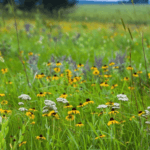
Beautiful flowers gardenia Plants For Your homes

The beauty and intricacy of alpine flora captivate the interests of botanists and nature enthusiasts alike. Thriving at high altitudes, this exquisite mountain vegetation is more than just a pleasing aesthetic; it is a testament to nature’s resilience. These plants have evolved over the centuries, showcasing a stunning array of adaptations that allow them to withstand the challenging conditions of the alpine ecosystems. Influential research, including that of prominent scholars such as Christian Körner, shines a light on the remarkable survival strategies of high altitude plants and their crucial role in maintaining the biodiversity of mountainous regions.
The upper reaches of our planet, with their crisp air and sparse resources, are home to a surprisingly rich variety of life. High altitude plants have been particularly adept at carving out a niche where few might dare to grow. Studies detail the upward migration of various species, their longevity and resilience, and how they form symbiotic relationships, which are as fascinating as they are vital. Understanding these alpine ecosystems is not just an academic pursuit—it is essential for preserving the delicate balance of life on our planet.
Alpine ecosystems are a place of contrasts, where the robustness of life meets the harshness of the elements, resulting in a biome worth our attention and protection. Spruce and larch trees scrape the sky, while the resilient Arolla pine stubbornly clings to life for several centuries. Amidst this, lush alpine meadows carved by ancient glaciers serve as summer pastures for grazing animals and exhibit the impact of human activity on these landscapes. The distinctiveness of alpine plant communities serves as a repository for biodiversity and a living laboratory for studying the effects of climate change.
Almost completing 10 years of studies on the subject, we could say that a new study is on its wayAlpine meadows play an instrumental role in the biodiversity and cultural traditions of mountain communities, yet face threats from invasive species and development.
The intricate world of Alpine plant diversity offers a stunning glimpse into the capacities of flora to endure and thrive in harsh conditions. In the heart of this resilience are Alpine plant adaptations, evolutionarily crafted traits that enable survival amidst the severe alpine weather patterns. Such adaptations are not only crucial for the plants’ survival but also for maintaining the ecological balance of their high-altitude homes.
Among striking examples, the Alpine salamander and the Alpine ibex exhibit remarkable physiological and behavioral traits tailored to their cold, rugged environments. These adaptations range from reproductive strategies to unique foraging behaviors, demonstrating nature’s ingenuity. Understanding these adaptations enriches our overall comprehension of alpine biodiversity and aids in the conservation efforts by highlighting the specificity of these species’ needs.
Research illuminates the vastness of Alpine plant diversity, underscoring that the Alpine regions serve as home to about 8% of endemic vascular plant species of the Alps. With 831 remote alpine areas highlighted in studies, untouched by human influence and bustling with life, such locations are core to understanding our planet’s biodiversity.
In ecological webs, Alpine species play foundational roles by cycling nutrients and providing support for wildlife. Unique venues like alpine botanical gardens are pivotal in educating the global community about these ecosystems. These gardens don’t just conserve rare alpine flora but also replicate their complex native habitats, offering researchers and visitors alike a closer look at these ecosystems’ functioning.
| Conservation Strategy | Key Components | Implemented by |
|---|---|---|
| Ex situ conservation efforts | Seed banking, propagation studies | Betty Ford Alpine Gardens, Global Partnership for Plant Conservation |
| Community Engagement Projects | Colorado Alpine EcoFlora Project, Colorado Pika Project | Denver Botanic Gardens |
| Genetic Research | Phylogenetic studies, Species-level phylogeny | Center for Plant Conservation |
This data suggests not only the richness of Alpine plant adaptations but the varied approaches necessary for their protection and understanding. Each aspect of alpine plant diversity, from genetic research to conservation strategies and community science initiatives, plays a crucial role in preserving this vital ecological wealth.
The resilience of Alpine plant communities in the face of extreme environmental conditions is a testament to the complex interplay of genetic adaptations and ecological strategies. High-altitude ecology not only challenges these plants with low temperatures and UV radiation exposure but also compels them to evolve sophisticated survival mechanisms. For instance, alpine plant survival hinges significantly on traits such as enhanced cold tolerance and adaptive physiological processes.
Studies have shown that species like Triplostegia glandulifera have undergone whole-genome duplications, which, intriguingly, have ramped up the number of genes associated with cold stress tolerance. Such genetic enhancements support the robustness required in alpine settings, where even slight shifts in environmental parameters can lead to significant survival implications.
| Genetic Trait | Impact on Survival | Comparative Species |
|---|---|---|
| High Expression of CBFs and LEAs | Improves cold tolerance | Lonicera japonica |
| Reduction in Disease Resistance Genes | Conserves energy in low-pathogen environments | Common in Alpine Plants |
Furthermore, these specialized adaptations are not limited to genetic modifications. Research at Rohtang revealed that alpine plants adapted their functional strategy under early snow-melt conditions. Species at higher elevations displayed a remarkable ability to synthesize vital substances safeguarding them against climatic adversities, showcasing a formidable physiological adaptation to maintain alpine plant survival under altered environmental timelines.
This pragmatic adaptation trend emphasizes the critical nature of high-altitude ecology, where each attribute of plant functionality contributes towards the larger equilibrium of the alpine plant communities. The ongoing challenges posed by climate change, such as temperature fluctuations and precipitation patterns, necessitate a deeper understanding of these complex ecological dynamics to predict future impacts on alpine biodiversity. Thus, addressing the conservation and scientific inquiry into these sensitive regions remains paramount for the sustainability of alpine environments.
The distinct and diverse alpine plant species thrive in an environment where few can, largely due to their remarkable adaptation to extreme conditions. Yet, these hardy species are facing unprecedented challenges due to the climatic impact on mountain vegetation. With climate change manifesting more rapidly in alpine ecosystems, it’s crucial to delve into how these shifts affect the flora that define these regions.
Advanced predictive models have now been tailored to address the complexities of alpine environments, aiding in forecasting changes in vegetation patterns with greater accuracy. Studies suggest that a mere 0.5°C increase in temperature, as projected for the year 2100, could necessitate an additional climb of approximately 700 vertical meters for alpine plant species seeking July-like conditions. This has profound implications, considering the tight elevation bands within which these species operate. Models predict shifts in treeline and vegetation zones with precision, enabling better conservation and management of these critical areas.
The thermal regime of an area significantly influences alpine ecosystems. The thermal adjustment of basic metabolism for alpine plants, necessary for survival above the treeline, shows an optimal temperature around 22°C, significantly different from their usual sub-zero habitat temperatures. Such thermal constraints make alpine plants highly sensitive to temperature fluctuations, which are becoming increasingly common with global warming.
Observations indicate that the resilience of alpine plant species to changing temperatures can be unexpected. For instance, some species have demonstrated a robustness against warming, potentially due to their preadaptation to highly variable temperatures within microhabitats. Furthermore, changes in snow cover patterns, seen in the Mont-Blanc massif with nearly a month’s reduction since 1970, affect the insulative snow blanket that many alpine plants rely on to survive winter months.
Additionally, the interaction between increasing temperatures and other climatic factors such as precipitation changes and permafrost withdrawal poses further challenges. These factors collectively influence phenological shifts and could lead to advanced budding and flowering times, altering the synchrony within the ecosystem and potentially disrupting pollination processes and seed dispersal timelines.
The interconnectedness and precarious balance of alpine ecosystems necessitate a nuanced approach to monitoring and potentially mitigating the climatic impacts on mountain vegetation. Only through continued research and adaptive conservation efforts can the diversity and stability of these ecosystems be maintained for future generations.
The unique challenges of high-altitude environments require alpine plants to develop specialized adaptation strategies. Collectively, these mechanisms not only contribute to alpine plant diversity but also ensure high altitude plant survival. Here we delve into the details of alpine plant adaptations, exploring how these resilient species thrive in their extreme habitats.
Root system enhancements and compact growth forms are especially crucial. By developing extensive root networks, alpine plants can secure water and nutrients from rocky soils, while compact forms help minimize heat loss. Additionally, physiological adaptations like increased thermal resistance allow these plants to manage the severe temperature fluctuations often encountered in alpine zones.
Furthermore, alpine plants demonstrate remarkable resilience to desiccation and other stress factors, illustrating the complex nature of survival at high altitudes. By understanding these adaptation mechanisms, we gain insights into the broader context of alpine plant diversity and ecosystem dynamics.
Conclusively, the inherent abilities of alpine plants to adapt to their unforgiving environments not only underline their role in maintaining ecological balance but also highlight their importance in the study of biodiversity and biological resilience in face of global climate challenges.
The resilience and diversity of alpine plant communities are notably enhanced by the complex symbiotic plant relationships that form within them. These relationships are particularly crucial in the face of environmental stressors, which are increasingly exacerbated by climate change.
One striking example of these beneficial interactions can be seen in the role of nurse plants. These plants provide shelter and create microclimates that substantially improve living conditions for surrounding species, thereby supporting overall alpine plant ecology. To understand the broader impact of these relationships, it’s essential to consider both ecological function and geographical distribution.
Research from various alpine regions around the globe shows that positive interactions among flora are not just common but pivotal for survival. For instance, in areas like the Tibetan Plateau, where the climate has warmed significantly since the 1970s, these interactions help maintain ecological balance and enhance plant resilience against temperature extremes and soil degradation.
Nurse plants such as Laretia acaulis are vital for the development of alpine plant ecology, offering critical shelter and better soil conditions which facilitate the growth of other alpine species. This nurturing role is essential for seedling survival and the stabilization of alpine soil, which in turn supports a rich biodiversity.
| Region | Percentage of Alpine Habitat | Impact on Biodiversity |
|---|---|---|
| Washington (North Cascades) | 2.2% | High elevation wildlife habitats supported |
| Oregon | 0.6% | Lower alpine coverage, focused conservation needed |
| British Columbia | 17% | Significant alpine area with diverse ecosystems |
| Tibetan Plateau | Over 50% grasslands | Increasing vegetation growth but some areas degraded |
This examination of alpine plant communities, symbiotic plant relationships, and the broader scope of alpine plant ecology is crucial for understanding and protecting these unique ecosystems in a changing world.
In recent years, the human impact on mountain vegetation has become a critical issue facing alpine regions globally. From urban expansion to the increasing pressures of tourism and recreation, these activities have led to a notable degradation of delicate alpine ecosystems. One of the most striking examples of this degradation can be observed in the Alps, recognized both as a biodiversity hotspot and one of the most exploited ecosystems.
The urgency for conservation efforts in alpine regions is underscored by the activities of environmental organizations such as the WWF. Their European Alpine Program, collaboratively managed by organizations in Austria, France, Italy, and Switzerland, focuses heavily on sustainable management and alpine plant protection.
This concerted effort aims to enhance connectivity between protected areas, ideally creating a bridge for biodiversity and ensuring the sustainable use of alpine natural resources. The program’s biodiversity vision encompasses strategies aimed directly at mitigating the human impact and promoting recovery and preservation of these critical areas.
The table below details some of the primary concerns and strategic responses under the WWF’s initiatives:
| Issue | Strategic Response |
|---|---|
| Biodiversity Loss due to Urbanisation and Tourism | Enhanced protection regulations, area connectivity for species migration |
| Climate Change Impacts on Alpine Vegetation | Integration of climate projections in conservation strategies |
| Invasive Species Control | Targeted removal and habitat restoration initiatives |
| Ecosystem Fragmentation | Landscape-scale conservation planning |
These conservation efforts in alpine regions are vital not only for the preservation of environmental health and biodiversity but also for safeguarding the future of alpine communities worldwide. The commitment shown by organizations and governments indicates a positive move towards sustainable coexistence with our planet’s invaluable alpine ecosystems.
The exploration and analysis of Alpine Flora has unraveled a world of botanical intricacies, with a rich collection of species that exhibit remarkable resilience in face of the harsh high altitude ecosystems. Research findings, such as from Lake Bolshoye Shchuchye’s 24,000-year sedaDNA records, demonstrate not only a vibrant past but also a dynamic response to changing environments over millennia. The staggering diversity noted from the study – ranging from 134 vascular plants to robust bryophyte communities – signifies the adaptive prowess and evolutionary fortitude of these organisms.
With the historical data as our guide, current trends documented in various studies, including those by Pauli H. and Spasojevic MJ., only further underscore the effects of climate and its profound implication on the shifting boundaries of alpine vegetation. Indeed, an upward shift of plants is contributing to the increasing homogeneity among mountain summits. Understanding such transformations is essential for planning effective alpine conservation strategies. Recognizing the imperative to protect these fragile habitats from human impact, it’s crucial to continue the integration of scientific evidence into conservation practices.
Altogether, these insights call for a reinforced global commitment to safeguard the biodiverse tapestries of our planet’s towering highlands. To witness the longevity of species that have withstood millennia, as evidenced by millions of filtered reads from sedaDNA analysis, is to acknowledge the sustained balance that has yet to face its most daunting adversary – anthropogenic climate change. Hence, championing alpine conservation measures is pivotal for the survival of the ecological haven that is rooted at the heights of our world.




